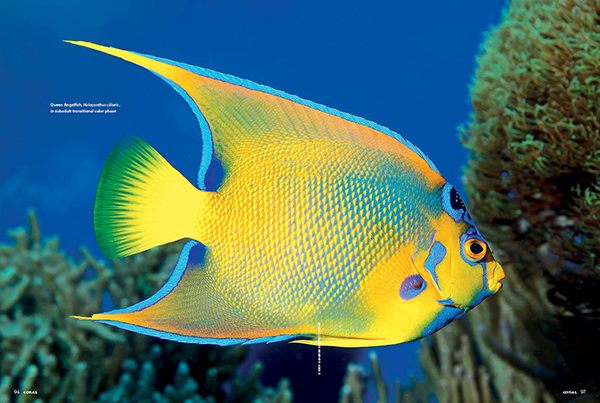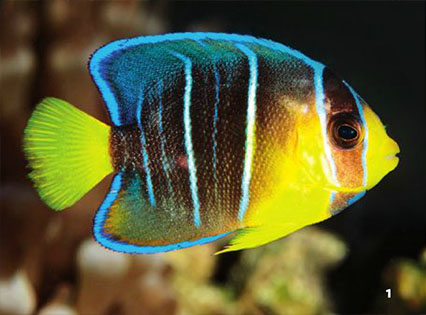Once in a great while something slips by in the CORAL Magazine editing process. Generally, the shortfall is simply that the error didn’t fall under the right editor’s eyes before going to print.
Such is the case with two images included on page 98 of the March/April 2016 issue of CORAL, in Daniel Knop’s Species Spotlight Profile for the Queen Angelfish, Holacanthus ciliaris.
Two of these fish are, in fact, the Blue Angelfish, Holacanthus bermudensis. Before we tell you which ones they are, can you tell just by looking?
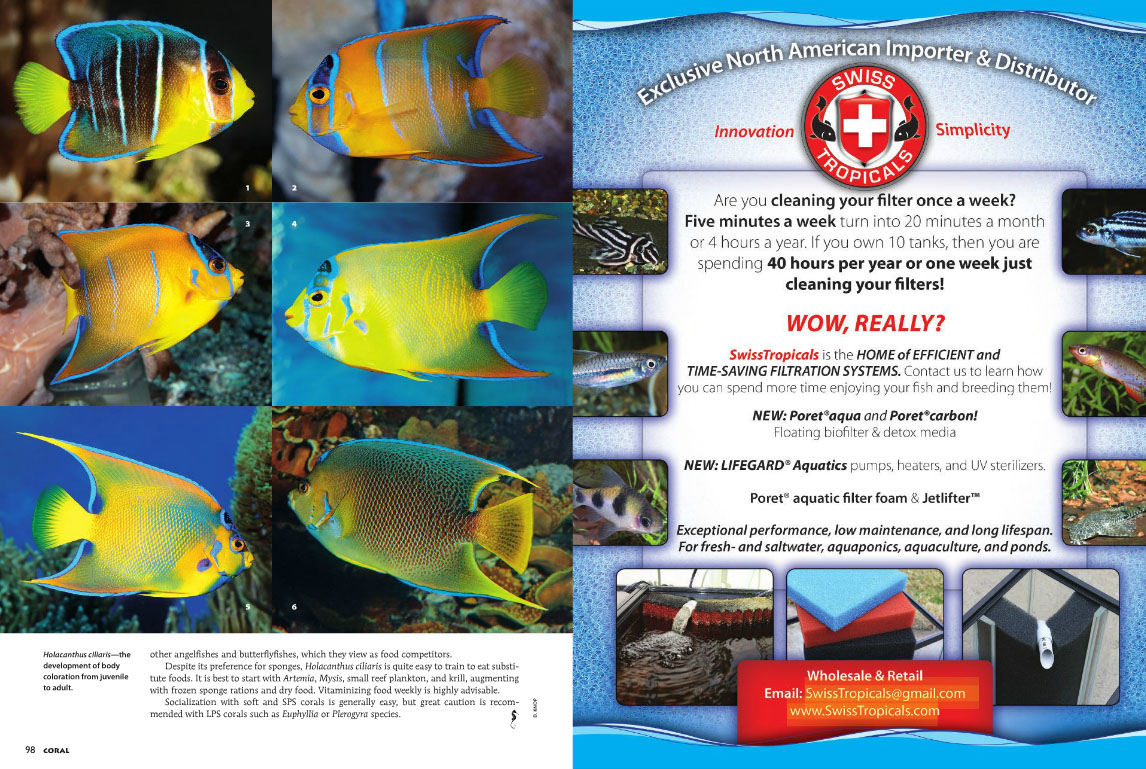
Unfortunately, two Blue Angelfishes, Holacanthus bermudensis, images 1 and 6 in this series, snuck by misidentified as the Queen Angelfish, Holacanthus ciliaris.
Sister Species Living In The Same Neighborhood
The Queen Angelfish and the Blue Angelfish are closely related species that share overlapping geographic ranges in the Western Atlantic Ocean; the Blue Angelfish being a somewhat more northern species, while the Queen Angelfish’s range extends further south. Scott Michael, in his Reef Fishes book Angelfishes & Butterflyfishes, notes that the Blue Angelfish is a more inshore species, while the Queen Angelfish is more prevalent in overshore reef habitats.
Differentiating Juveniles of Blue and Queen Angelfishes
In the first image, #1 in the cluster of images on page 98, a juvenile Blue Angelfish, Holacanthus bermudensis is shown, instead of a juvenile Queen Angelfish, H. ciliaris.
Juvenile Queen and Blue Angelfishes are surprisingly similar in coloration. A juvenile Blue Angelfish can be reasonably identified by the center stripe being more or less straight.
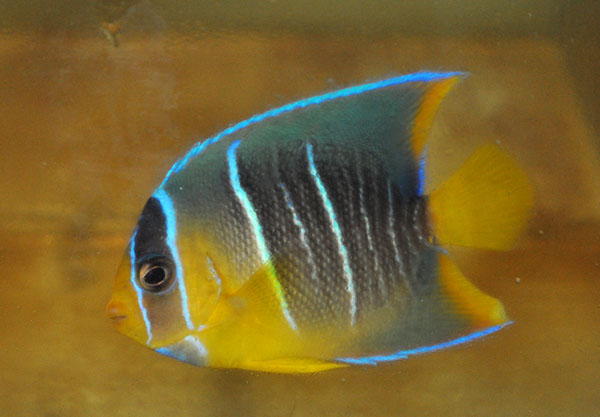
A juvenile Blue Angelfish, Holacanthus bermudensis, identified primarily through straight vertical barring and somewhat less vibrant coloration. Image by Matt Pedersen
Meanwhile, juvenile Queen Angelfish have a center stripe that is decidedly curved. Coloration also could be described as more vibrant or more high contrast.
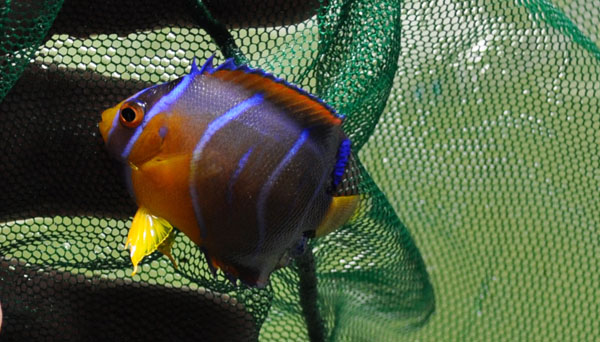
A very small Queen Angelfish showing heavily curved bars and more vibrant / orange coloration. Image by Matt Pedersen
Differentiating Blue and Queen Angelfishes as Adults
Were it not for the occurrence of hybrids, telling Queen and Blue Angelfish apart would be pretty easy. The fish shown in image #5 on page 98 is a solid representative of the Queen Angelfish, showing all the diagnostic characteristics; a large well defined “crown” on the nape, a solid yellow tail, and yellow pectoral fins with a blue spot at the base. While not universally exclusive, Queen Angelfish also tend to have blue trailing edges of the dorsal and anal fin.
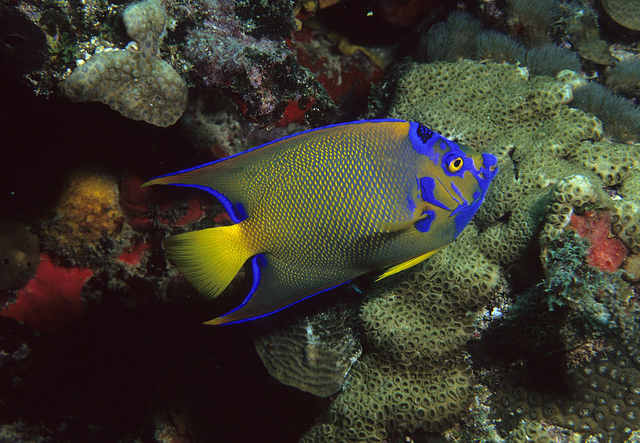
A mature Queen Angelfish, Holacanthus ciliaris, showing the yellow tail, yellow pectoral fins, and nape crown characteristic of the species. Image by Dr. Dwayne Meadows, NOAA/NMFS/OPR | CC BY 2.0
Meanwhile, the Blue Angelfish lacks the black nape crown seen in the Queen. The tail of a Blue Angelfish is basically the body coloration, edged in yellow. Pectoral fins on the Blue Angelfish are more blue, with yellow and then clear margins.
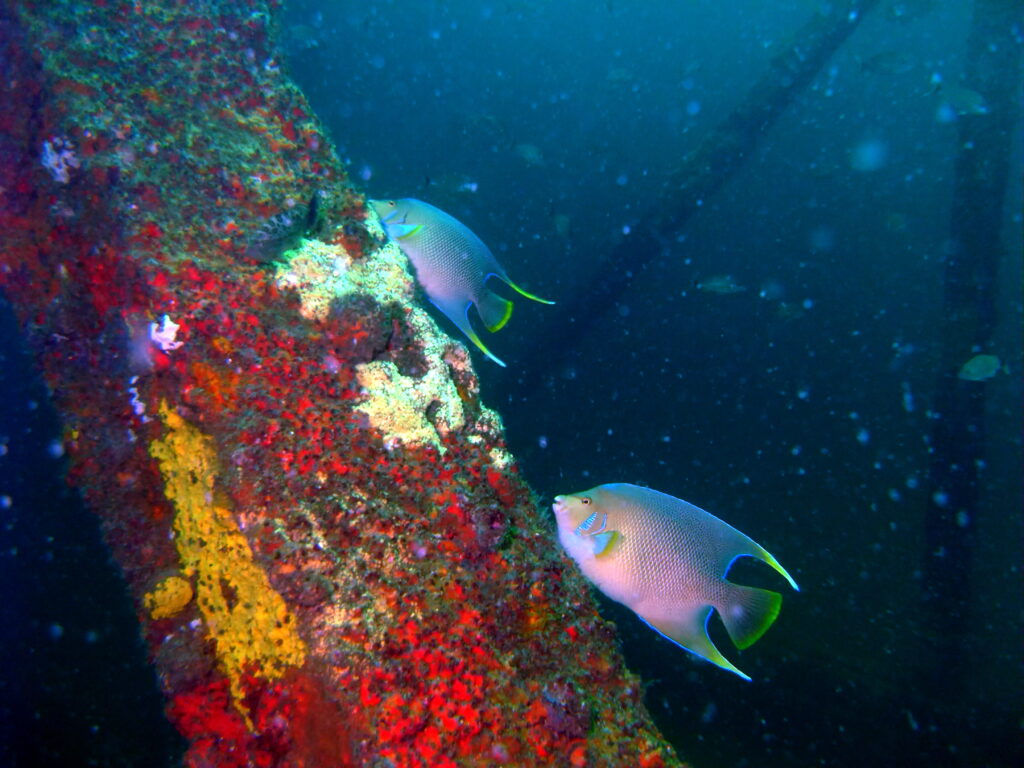
A pair of Blue Angelfish, Holacanthus bermudensis, photographed at Bridge Span 14 in Panama City Beach, FL, by Greg Grimes | CC BY SA 2.0
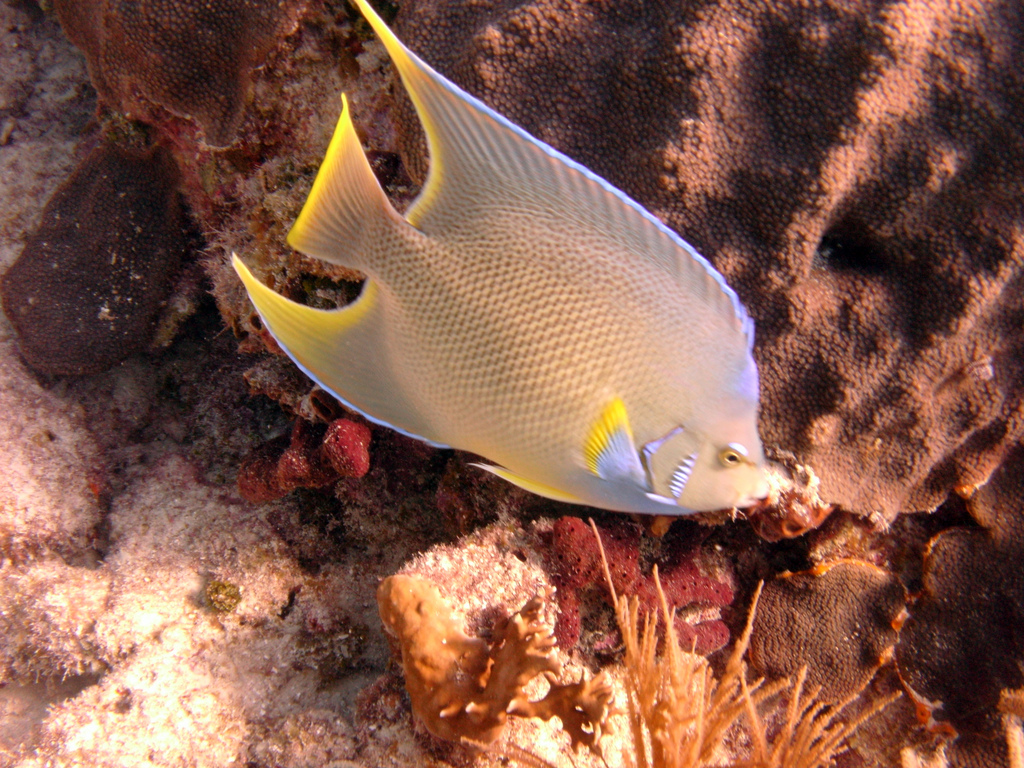
Another look at the Blue Angelfish, showing how they can still show a “blue crown” of sorts on the nape, but overall clearly illustrating the immediate coloration differences that distinguish it from the Queen Angelfish. Image by Flickr user amanderson2 | CC BY 2.0
The fish shown as the final “adult” image for a Queen Angelfish, #6 in our series, does not depict an adult Queen Angelfish.
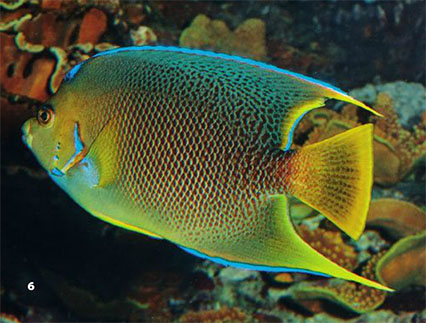
This image was included in our print issue as a Queen, but is not. While a few might say “well, could this be a hybrid”, we believe this is actually a mid-sized adult Blue Angelfish; note the pectoral fins are not quite yet mostly blue, and the body coloration is still filling in over the juvenile’s solid white tail. We may never know with certainty, but what we can say with authority is that this isn’t a representative example of a pure Queen Angelfish.
How Confusion Creeps In
Given these overlapping ranges and habitats, it is fairly common to encounter the hybrid between the Queen and Blue Angelfish, which for a time was referred to as Holacanthus townsendi, Townsend’s Angelfish. This somewhat routine hybrid only ads to to the confusion when trying to figure out which species you’re looking at. The image shown below was simply labeled as being two Blue Angelfish feeding…but take a closer look…
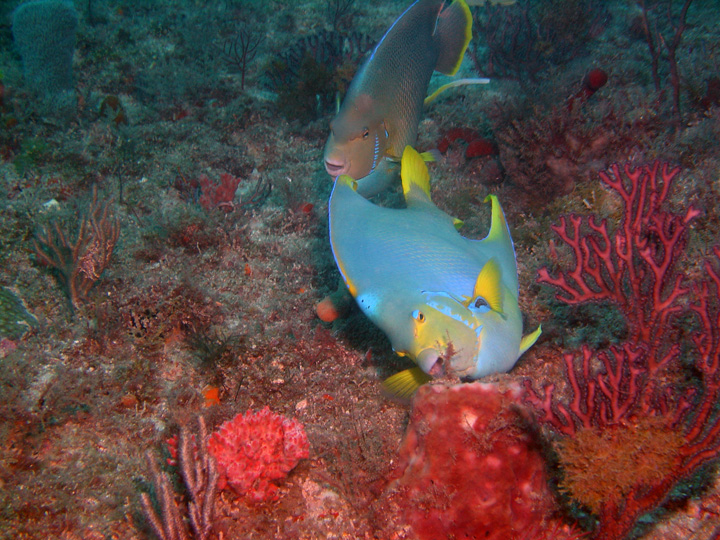
A Blue Angelfish hangs in the background, while a possible hybrid “Townsend’s” Angelfish grazes in the foreground. The incomplete nape crown, yellow trailing edge on the anal fin, and body color extending into the tail, are possible tip-offs to some cross breeding in this fish’s genetic history. Image by Gary Rinaldi | CC BY SA 2.0
Clearly, it takes a bit of knowledge and a close eye for detail to catch the differences at play within this pair of species..and their hybrid love children. Further notes on this species complex will appear in the May/June issue of CORAL.
